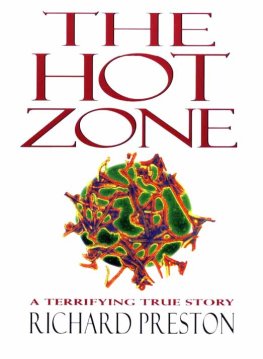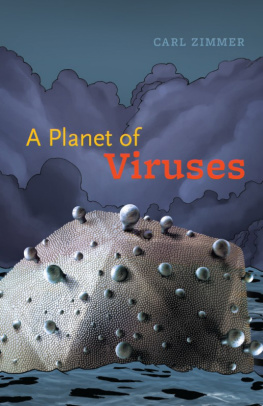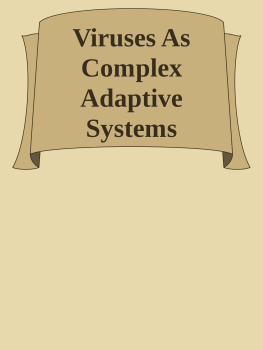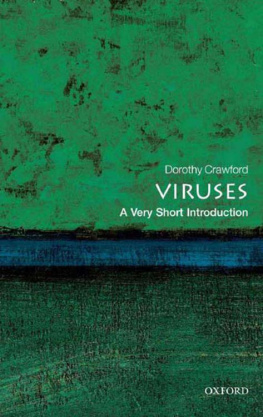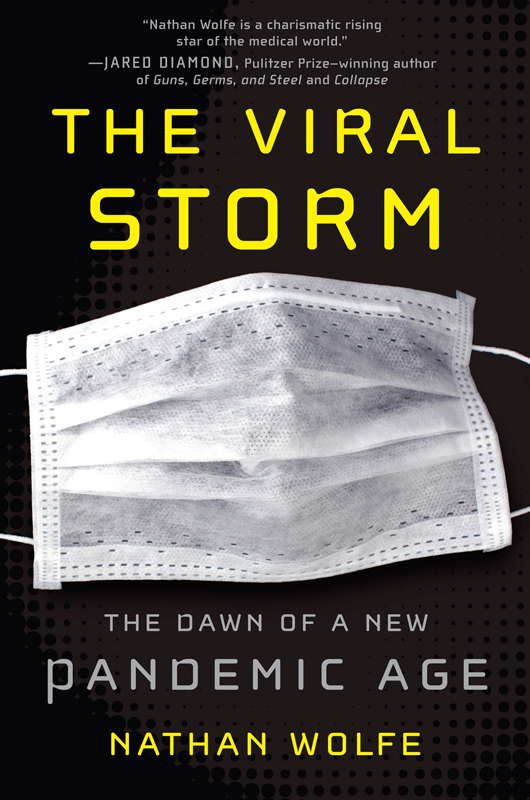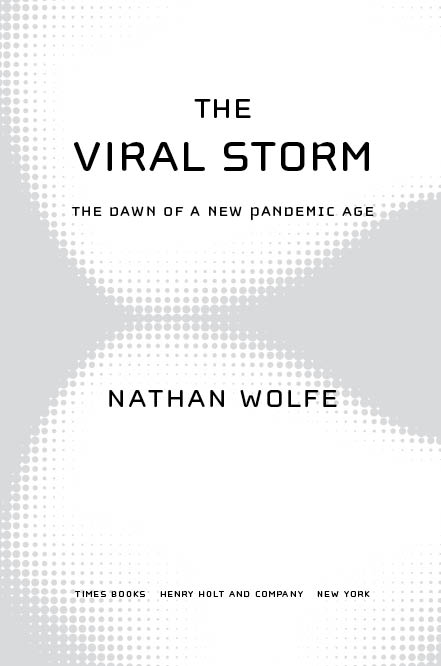
To my team at Global Viral Forecasting in San Francisco and around the world who devote their lives to making the world safe from pandemics
CONTENTS
INTRODUCTION
The village of Pang Thruk in the Kanchanaburi province of Thailand is like many in this part of the worldhumid, lush, and spilling over with sounds of wildlife. Located in the west of the country near the border of Burma, Pang Thruk is home to about three thousand people whose livelihoods depend on the sugar and rice they grow. In December 2003, it was also home to Kaptan Boonmanuch, a six-year-old boy who would be among the first people to die of a brand-new human virus.
Kaptan loved riding his bicycle, climbing trees, and playing with his plastic toy Dalmatian that pulled three puppies in tiny brown wagons as it barked mechanically. Kaptan also enjoyed helping his family on the farm.
Nearly every family in Pang Thruk kept egg-laying chickens; some also kept roosters for cock fighting. Kaptans aunt and uncle lived just down the road on their open-air farm of around three hundred chickens. Each winter in the village a few chickens would die from suspected infections or colds, but in December 2003 chicken deaths increased dramatically. That winter, as on many farms in this region, the chickens in Kaptans uncles farm suffered from severe diarrhea, strange behavior, and weakness. All of them either died naturally or were culled as a result of their illnessand Kaptan helped with the dead. A day or two before the New Year, according to reports, the boy carried one of the sick squawking chickens home. That walk home would have lasted no more than a few minutes.
A few days later Kaptan grew feverish. A clinic in the village diagnosed him with a cold, but after three days without improvement, his father, Chamnan, a rice farmer who worked part time as a driver, took him to a public hospital. X-rays revealed that the six-year-old had pneumonia, and he was kept in the hospital for observation. A few days more and Kaptans fever spiked to a dangerous 105 degrees. His father paid the equivalent of thirty-six dollars for an ambulance to speed him to better care at Siriraj Hospital in Bangkok, more than an hours drive away.
Upon arrival, Kaptan presented with shortness of breath and fever. Tests revealed that both lungs were affected with severe pneumonia, and the boy was transferred to the pediatric intensive care unit and put on a ventilator. A series of bacterial cultures tested negative, showing that the infection was likely caused by a virus. More detailed testing using a molecular technique called the polymerase chain reaction, or PCR, revealed that Kaptan was likely infected with an atypical type of influenzaperhaps one not yet seen (or seen widely) in humans.
After eleven days of illness, the boys fever finally began to cool off. However, despite intensive care, his respiratory distress worsened. Just before midnight on January 25, physicians took Kaptan off the respirator. His lungs drowning in fluids, he became Thailands first known death from H5N1, which would soon become known around the world as bird flu.
* * *
As sad as Kaptans death wasand the reports go on to describe the boys funeral and the familys mourning in tragic detailthe reality is that children in the developing world die from diseases like this all the time. And infectious diseases, which scientists in the 1960s predicted would be eliminated in short order, remain some of the most important killers today. But when it comes to global risk, all deaths are not equal. Most deaths from infectious diseases are localized events that, while dire for the victims and their families, present limited risk to the planet as a whole. But some, like Kaptans, signal a potentially world-altering event: the first human infection by an animal virus that may wipe out millions, or hundreds of millions, of people throughout the planetpermanently changing the face of humanity.
The main objective of my work is to hunt down these eventsthe first moments at the birth of a new pandemicand then work to understand and stop them before they reach a global stage. Because pandemics almost always begin with the transmission of an animal microbe to a human, its work that takes me all around the globefrom rain forest hunting camps of central Africa to wild animal markets of east Asia. But it also takes me to cutting-edge laboratories at the US Centers for Disease Control and Prevention (CDC) and disease outbreak control centers at the World Health Organization (WHO). Tracking down these potentially devastating bugs has led me to study how, where, and why pandemics are born. I work to create systems that can accurately detect pandemics early, determine their likely importance, and, with any luck, crush those that have the potential to devastate us.

Kaptans brother holds a framed photo of Kaptan Boonmanuch at his funeral. ( SUKREE SUKPLANG / Reuters / Corbis )
As Ive lectured on this work around the world and taught undergraduates in my virology seminar at Stanford University, its hard to ignore a growing general interest in these topics. Everyone recognizes the raw power that pandemics have to sweep through human populations and seemingly kill indiscriminately. Yet, given the importance of these events, large questions remain remarkably opaque:
How do pandemics start?
Why are we now plagued with so many pandemics?
What can we do to prevent pandemics in the future?
This book is my attempt to answer these questionsan effort to assemble the pieces of the pandemic puzzle.
Part I, Gathering Clouds, introduces our main character, the microbe, and delves into the history of our relationships with these organisms. It explores the vast world of microbes, putting those that threaten us in their proper perspective. It details some of the most significant events in the evolution of humans and our ancestors and works to develop the often-spotty historical data into a set of hypotheses on how the events influenced our interactions with microbes.
Part II, The Tempest, examines how contemporary human populations have grown so exquisitely susceptible to pandemics and what the future years will hold for pandemic diseases. Part III, The Forecast, describes the fascinating new world of pandemic prevention and introduces a new crop of scientists eager to help create a virtual global immune system that will stop pandemics before they become planetary nightmares. Along the way, we will journey to remote hunting villages in central Africa, investigate malaria in wild orangutans in Borneo, learn how cutting-edge genetic sequencing tools will change the way that we discover completely novel viruses, and see how Silicon Valley companies may forever transform the way that we conduct surveillance aimed at finding the next major outbreak.
* * *
At this point you may be asking yourself how someone ends up devoting his career to the study of plagues. Is it a desire to save the world? Or perhaps its the scientific thrill of discovering completely unknown, invisible beings with the potential to wipe out large swaths of humanity. Maybe its the desire to understand in detail one part of humans intricate ecology. Or its an urge to explore the exotic locations on Earth where these novel viruses often appear. But while my life is now consumed with trying to understand and stop pandemics, thats not how its always been. My work with microbes actually started as a minor footnote to a study I wanted to conduct among wild chimpanzees in central Africa.


